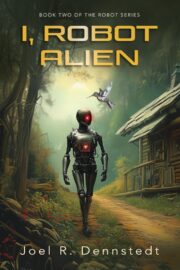Guest Post: 5 Things To Do In Your First 3 Paragraphs
by Cat Rambo
 1. Engage the senses. You don’t have to hit every sensory stop – but it sure helps. Vivid visuals are great, but they are even better when backed up with visceral, precise taste or touch or sound.
1. Engage the senses. You don’t have to hit every sensory stop – but it sure helps. Vivid visuals are great, but they are even better when backed up with visceral, precise taste or touch or sound.
2. Hint at the conflict. The majority of great stories provide the reader with some clue to the conflict driving the story within the first three paragraphs. Here, for example, is the first paragraph of Kelly Link’s marvelous “Travels with the Snow Queen”:
Part of you is always traveling faster, always traveling ahead. Even when you are moving, it is never fast enough to satisfy that part of you. You enter the walls of the city early in the evening, when the cobblestones are a mottled pink with reflected light, and cold beneath the slap of your bare, bloody feet. You ask the man who is guarding the gate to recommend a place to stay the night, and even as you are falling into bed at the inn, the bed, which is piled high with quilts and scented with lavender, perhaps alone, perhaps with another traveler, perhaps with the guardsman who had such brown eyes, and a mustached that curled up on either side of his nose like two waxed black laces, even as this guardsman, whose name you didn’t ask calls out a name in his sleep that is not your name, you are dreaming about the road again. When you sleep, you dream about the long white distances that still lie before you. When you wake up, the guardsman is back at his post, and the place between your legs aches pleasantly, your legs sore as if you had continued walking all night in your sleep. While you were sleeping, your feet have healed again. You were careful not to kiss the guardsman on the lips, so it doesn’t really count, does it.
Holy cow, talk about grabbing the reader with bravura and effortlessly stuffing them full of story. Second person is such a wonderful and reckless choice and it works here in a way not all second person narratives do. There’s physical pain, the bare bloody feet, and sensory beyond the visual with lavender and high-piled quilts and pleasant aches. And beyond that there is both an external conflict, the enforced journey, the drive in her dreams, and an internal conflict, a shame that, because the narrator is so careful not to look at it, makes us achingly aware of its existence: You were careful not to kiss the guardsman on the lips, so it doesn’t really count, does it. (The rest of the story is even better, and Link’s collection Magic For Beginners is worth picking up for its craftsmanship as well as the enjoyment its fabulous stories offer.)
3. Display your command of language. It’s worthwhile for a writer to think about poetry, and all its devices like assonance and alliteration, metaphor and allusion, internal rhythm, even meter. Save scraps of speech that you like, stud those paragraphs with wonderful things and spend with wild abandon from your store, because this is the make or break moment, when your reader decides whether or not to continue. You cannot lavish enough attention on your reader in the form of these paragraphs.
Look at how Carol Emshwiller’s “All of Us Can Almost…” begins, with a fancy hook made of punctuation attached to the title, like an elaborate latch on the door opening into the story:
…fly, that is. Of course lots of creatures can almost fy. But all of us are able to match any others of us, wingspan to wingspan. Also to any other fliers. But through we match each other wing to wing, we can’t get more than inches off the ground. If that. But we’re impressive. Our beaks look vicious. We could pose for statues for the birds representing an empire. we could represent an army or a president. And actually, we are the empire. We may not be able to fly, but we rule the skies. And most everything else too.
That conversational tone doesn’t come easily – it’s beautifully wrought, wonderfully precise.
4. Intrigue the reader while establishing the rules. Thomas M Disch’s “The Wall of America” sets the tone, narrative distance, and time frame (now to near future) while establishing a question (what’s the Wall?) that makes the reader want to keep going:
Most people got more space along the Wall than they could ever use, even the oddballs who painted leviathan-sized canvases they couldn’t hope to sell to anyone who didn’t have his own airplane hangar to hang their enormities. But if you did work on such a scale, you must have had money to burn, so what would it matter if you never sold your stuff? The important thing was having it hung where people could see it.
5. Use interesting, active words. You can never go wrong with this. Here’s James Tiptree Jr. at her best, full of poetry in “Your Faces, O My Sisters! Your Faces Filled Of Light!”:
Hot summer night, big raindrops falling faster now as she swings along the concrete expressway, high over the old dead city. Lightning is sizzling and cracking over the lake behind her. Beautiful! The flashes jump the roofs of the city to life below her, miles of cube buildings gray and sharp-edged in the glare. People lived here once, all the way to the horizons. Smiling, she thinks of all those walls and windows full of people, living in turbulence and terror. Incredible.
All of these count in titles too. Here’s an exercise: write down ten first sentences or titles, playing with one of these concepts in each. Then pick the most promising and go write that story.
(Reader notes: The stories cited here can be found in The James Tiptree Award Anthology 1, The James Tiptree Award Anthology 2, The Wall of America by Thomas Disch, and Her Smoke Rose Up Forever by James Tiptree, Jr. Sadly, none of these are available on the Kindle. The Kelly Link collection, however, is available on the Kindle.)
•••
Find Cat Rambo’s fiction at her website. She teaches at Bellevue College, acts as a board member for Broad Universe and serves as a volunteer with Clarion West. Her most recent publication is her short story collection for Kindle and other e-readers. Look for upcoming work in 2011 in Abyss & Apex, Beneath Ceaseless Skies, Bull Spec, Daily Science Fiction, Giganotasaurus, Lightspeed, and more.
This post originally appeared on Cat Rambo’s blog.


